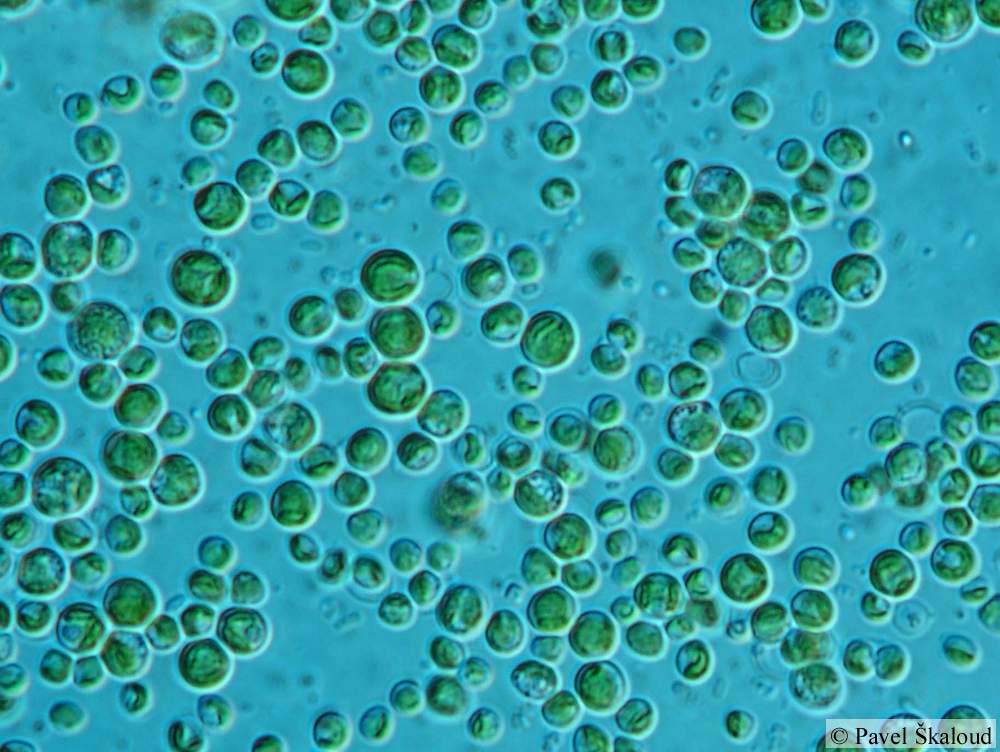Chlorella minutissima
For the course duration, the article is closed to outside editing. Of course you can always leave comments on the discussion page. The anticipated date of course completion is May 21, 2009. One month after that date at the latest, this notice shall be removed. Besides, many other Citizendium articles welcome your collaboration! |
| Chlorella minutissima [1] | ||||||||||||||
|---|---|---|---|---|---|---|---|---|---|---|---|---|---|---|
[[image: |200px|]] |200px|]] | ||||||||||||||
| Scientific classification | ||||||||||||||
| ||||||||||||||
| Binomial name | ||||||||||||||
| Chlorella minutissima |
Description and significance
Chlorella Minutissima is an unicelluar marine alga that has chorophyll a and b, and synthesizes starch, like plants. Some sources classify algae as plants, such as the Australian Antarctic Data Centre.[2] However, algae are more often categorized into Kingdom Protista, which belongs to domain Eukarya. Therefore algae have membrane enclosed nucleus, yet the internal structures of algae are simpler than those of plants. Chlorella minutissima is rich in amino acids and polyunsaturated fatty acids, particularly eicosapentaenoic acid (20:5co3), which makes Chlorella Minutissima potentially useful in health foods and pharmaceuticals.[3] In the past Chorella Minutissima has been considered to be used as a protein source to the world population to solve the problem of hunger due to two World Wars and the increasing population. Scientists later found that to produce Chlorella Minutissima massively under ideal conditions, the condition would cost a very high cost to maintain. The microalga is an important component in finfish and shellfish aquaculutre 4, therefore research has been done in maximizing the growth and storage of Chlorella Minutissima.
Genome structure
Cell structure and metabolism
Ecology
Pathology
Application to Biotechnology
Current Research
References
[1] http://www.uniprot.org/taxonomy/3081
[2] http://data.aad.gov.au/aadc/biodiversity/taxon_profile.cfm?taxon_id=116567
[3] Seto,A., Wang,H.L. and Hesseltine,C.W. Culture Conditions Affect Eicosapentaenoic Acid Content of Chlorella minutissima. Journal of the American Oil Chemists' Society, Volume 61, Number 5. May, 1984, p.892-894.
[4] Tzovenisa, I., Triantaphyllidisb, G., Naihongc, X., Chatzinkolaoua, E., Papadopouloua, K., Xouria, G., Tafasa, T. Cryopreservation of marine microalgae and potential toxicity of cryoprotectants to the primary steps of the aquacultural food chain. Aquaculture, 230, 2004, p.457–473
- ↑ =http://www.uniprot.org/taxonomy/3081
- ↑ =http://data.aad.gov.au/aadc/biodiversity/taxon_profile.cfm?taxon_id=116567
- ↑ =Seto,A., Wang,H.L. and Hesseltine,C.W. Culture Conditions Affect Eicosapentaenoic Acid Content of Chlorella minutissima. Journal of the American Oil Chemists' Society, Volume 61, Number 5. May, 1984, p.892-894